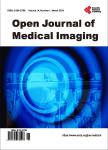Strategies to Improve CT Dose Optimization for Hybrid PET/CT Imaging
Strategies to Improve CT Dose Optimization for Hybrid PET/CT Imaging作者机构:Faculty of Applied Medical Sciences Jordan University of Science and Technology Irbid Jordan School of Physics Universiti Sains Malaysia Penang Malaysia Department of Radiological Sciences College of Applied Medical Sciences King Khalid University Abha Saudi Arabia Department of Radiology John Hunter Hospital New Lambton Heights Australia
出 版 物:《Open Journal of Medical Imaging》 (医学影像期刊(英文))
年 卷 期:2021年第11卷第2期
页 面:48-57页
学科分类:1002[医学-临床医学] 100214[医学-肿瘤学] 10[医学]
主 题:CT Scan Radiation Dose Hybrid Imaging PET Systems CTAC
摘 要:Background: To evaluate whether current dose reduction strategies for the CT component of hybrid Positron Emission Tomography—Computed Tomography (PET/CT) systems could reduce patient dose with maintaining adequate image quality for PET/CT studies. Materials and Methods: Literature survey was initially based on the selection of keywords and years of publication to identify potentially relevant articles, then the further search was conducted on the authors and references from these articles. The abstract of each article was first appraised to decide whether the content was relevant to this research question. The articles were classified into five groups: studies on dosimetry, studies on radiation-induced diseases, studies on dose reduction methods for CT-based attenuation correction (CTAC), studies on dose reduction methods for CT localization, and studies on reducing the need for a full-dose diagnostic CT in PET/CT imaging. 58 peer-reviewed articles were selected and appraised and 29 articles were used to compose this literature review. Results: The published nuclear medicine and medical physics literature were reviewed. CT dose contributed 47% - 81% of the total effective dose of a standard PET/CT study and was associated with radiation-induced diseases. The dose reduction techniques were extracted and divided into three categories: reducing the CT dose for attenuation correction (AC) and localization, selectively localizing CT use, and reducing the need for a full-dose diagnostic CT. Conclusion: Three strategies have been demonstrated, with high potential for reducing patient dose while maintaining an adequate CT image quality, used for CTCA localization and diagnosis, respectively.



